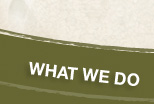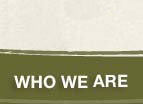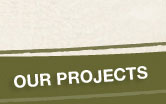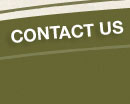 Learn the answers to some common questions we receive about ethnography and how we conduct our work.
Learn the answers to some common questions we receive about ethnography and how we conduct our work.
Some of these questions come from clients and potential clients. Others from conferences we’ve spoken at, and some are just from people we meet day to day whom get an earful when they ask what we do for a living.
At your college library or on the web! If you have a particular subject area in mind and have exhausted other sources, send us an email, and maybe one of us can recommend a book. Yes, but by recognizing our impact on the environment, we can minimize the impact it has on the research findings. Our ethnographers are skilled in making people feel comfortable and becoming a natural part of the environment. Yes, they can, but we don’t poke! People almost always get used to the camera in a matter of minutes, partially because we are inconspicuous about its use. We usually hold it at belly-level or otherwise out of the way, which is not only easier on our arms but makes the camera less obtrusive. The camera isn’t in the participant’s line of sight and face-to-face communication is unhindered. It is always helpful to use what you’ve learned in one piece of research to aid you in another or to use one piece of research to validate another. It depends on what you want out of each piece of research. Talk to us about it, we can help you come up with the best strategy. No, we don’t, but team members have had experience in the design, implementation and analysis of surveys, so we can work in conjunction with any quantitative work your team is doing. Focus groups don’t have the depth, the color, or the human touch of ethnography. Doing the interview in places where people feel at home is important. To observe our participants and “the thing under study” in a natural environment is so important, as is not having the constraints of a focus group, like time limitations and the lack of privacy. Focus groups give you the opportunity to hear what people say they are doing, while ethnography gives you the opportunity to see what people are actually doing! No, we focus on ethnography and just ethnography. With new product ideas, sales strategies, marketing plans, approaches to B2B relationships, and foundational understandings of their consumers. Ethnography has a long shelf-life and has been used in developing strategic platforms for many of our clients. Our extensive backgrounds in the social sciences, both in academia and applied to the business world, have made us strong ethnographers. We all have at least a Master’s degree in the social sciences, but in addition, we collectively have decades of experience conducting ethnographic studies. It depends. Usually we try to use multiple methods of recruiting so we can put together a diverse sample. We’ll either snowball and have a primary contact who will point us to people we can talk to, and/or we’ll just go out to wherever it makes sense to find the sort of people we are looking for—and yes, we’re always surprised at how many people will take us home with them! When the business arena (and research question) is more narrow in scope, we may choose research participants based on a screener. We don’t like to talk about sample sizes in terms of “number of people talked to” since we sample contexts and behaviors in addition to human beings. So an ethnographic field visit with one person might be the equivalent of giving a survey to twenty people or a thousand people for that matter. That’s because each visit contains the potential for a vast army of data points and data sources. The better question might be, “does your ethnographer know how to utilize this vast army of rich data points?” That said, social researchers and consumers of social research like to think in terms of head counts and so a small ethnographic project might include twelve or so primary participants (along with the people in their social network and the contexts in which the fieldwork took place). Large projects might involve more twenty, thirty, or more field visits (with long interviews and participant observation). The cost depends on the scope of the work. A project with a solid data set runs from $50,000 to $150,000. If you just need a smaller project with a quick turnaround it can be less, and larger projects, with multiple phases or multiple countries, are more. We’re good about explaining your options, and we’re also good about not selling you a river when all you need is a cup of tea. Typically, projects last 2-4 months, but project lengths can vary because the scope and methodology of projects vary. Start to finish, projects can be as short as six weeks and as long as a year or more, depending on the topic, population and business objectives of the project. Our team of ethnographers will work with you to determine a timeline that’s just right for you. Product testing and ad testing: if you have a product you want to test, focus groups are less expensive. If you want to find out the answer to a highly specific question about a well-defined kind of person, and if the answer requires a means-based statistic, larger-scale sample surveys are best. Ethnography is good for uncovering those “a-ha” findings that other market research methodologies cannot. We work inductively, meaning we enter the field with open minds and open research protocols. This helps break down the boundaries of what we can find, and we end up finding things that we and our clients could never have dreamt of finding. Ethnography is good when you have a problem, but you don’t know where to start to understand the solution. Ethnography is exploratory, but it can be tactical, too. It can tackle very specific problems and meet very specific goals. Ethnography is also good for bringing your segmentation to life—by putting faces and voices to the data. You can do this after your large quantitative segmentation study. Sometimes you will be surprised to see how different your customers are compared to who you imagined they would be based on your quantitative data.








You must be logged in to post a comment.